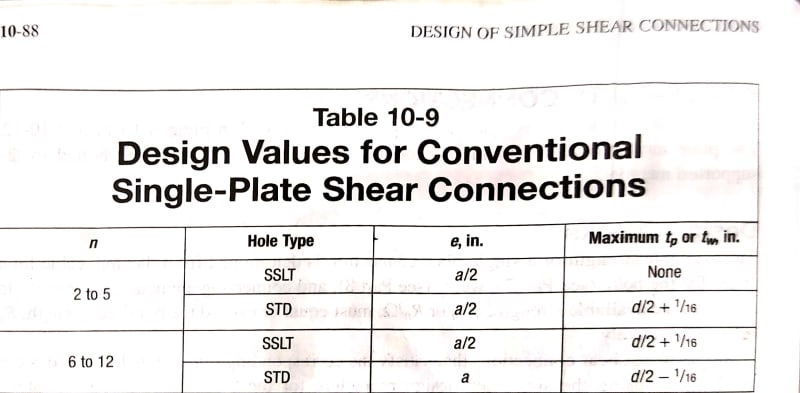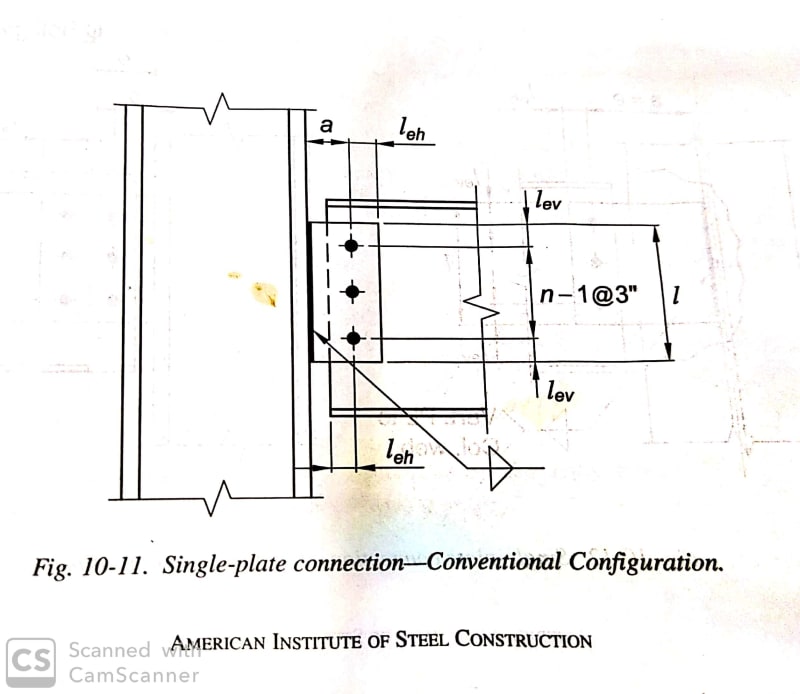Hey Guys,
This may sound silly but if you could help me I would be happy.
I have seen a table from AISC which shows the maximum thickness of the shear plate. assume 1" bolt
case 1:
Bolt numbers: 2 to 5 e=a/2, where e=3 1/2" max
If the connection holes to be SSLT, no limit to the max thickness of shear plate, so Can I use a 5/8" thick plate?
If the connection holes to be STD, Plate thick to be d/2+1/16"=9/16", so can't I use 5/8" as plate thick?
case 2:
Bolt numbers: 6 to 12 e=a/2(SSLT),e=a(STD) where e=3 1/2" max
If the connection holes to be SSLT, Plate thick to be d/2+1/16"=9/16", so can't I use 5/8" as plate thick?
If the connection holes to be STD, Plate thick to be d/2-1/16"=7/16", so can't I use 5/8" as plate thick?
Concludes that, whether can I use more thickness of shear plate than specified in table 10-9 or not?


Thanks in advance!!
This may sound silly but if you could help me I would be happy.
I have seen a table from AISC which shows the maximum thickness of the shear plate. assume 1" bolt
case 1:
Bolt numbers: 2 to 5 e=a/2, where e=3 1/2" max
If the connection holes to be SSLT, no limit to the max thickness of shear plate, so Can I use a 5/8" thick plate?
If the connection holes to be STD, Plate thick to be d/2+1/16"=9/16", so can't I use 5/8" as plate thick?
case 2:
Bolt numbers: 6 to 12 e=a/2(SSLT),e=a(STD) where e=3 1/2" max
If the connection holes to be SSLT, Plate thick to be d/2+1/16"=9/16", so can't I use 5/8" as plate thick?
If the connection holes to be STD, Plate thick to be d/2-1/16"=7/16", so can't I use 5/8" as plate thick?
Concludes that, whether can I use more thickness of shear plate than specified in table 10-9 or not?


Thanks in advance!!
